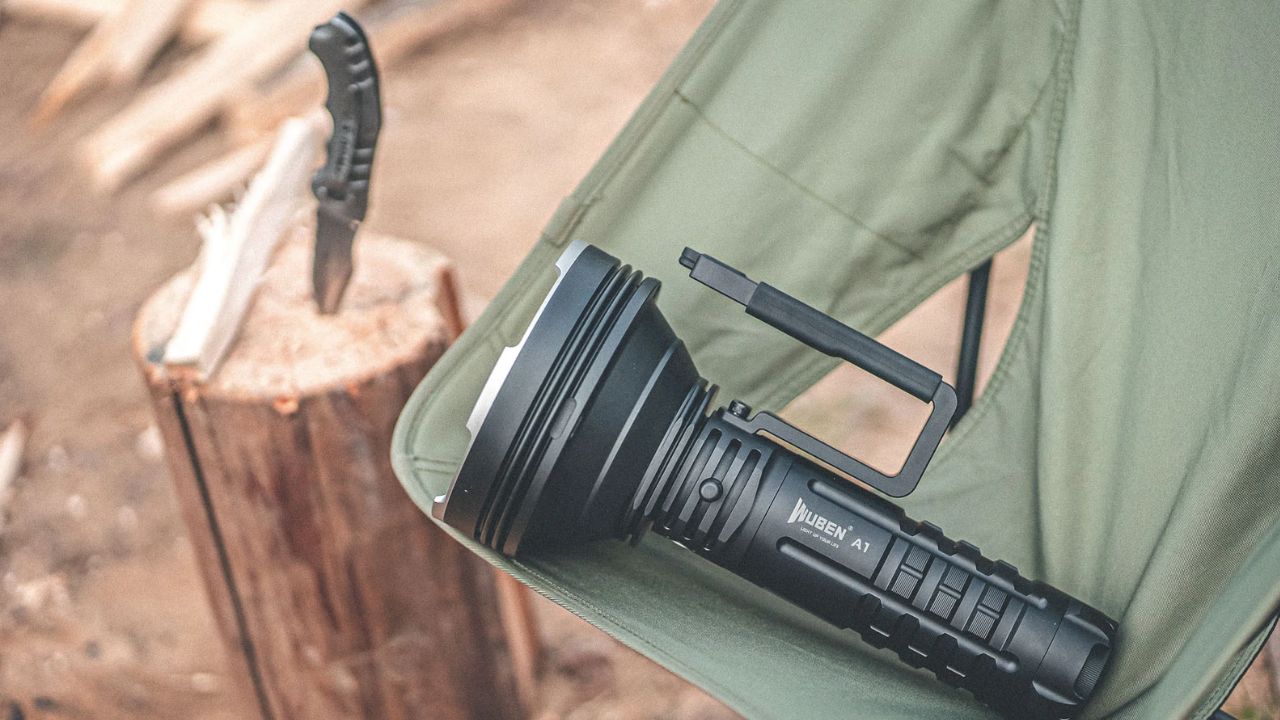A flashlight must be unrivaled when it comes to tools commonly carried daily. It is not just a source of light but a ray of hope in every hour of blackness, a companion in distress, a guide in any unimaginable territory.
However, one critical factor—a flashlight's build quality—heavily influences its effectiveness and reliability.
Build quality also defines the flashlight's durability and operating efficiency in different situations. This article focuses on the build quality issue in flashlight durability and why it must be a primary concern when choosing one of the best flashlights. If you want a durable flashlight, head to Wuben Light now!
What Determines a Flashlight's Durability?
In general, build quality pertains to the construction materials, the design and manufacturing of a product, and the assembly line quality. For flashlights, this means type of materials (for example, construction of body), quality of LED, perfect waterproofing seal, and electronic work inside the device.
Materials Matter
The choice of material is foundational in determining a flashlight's durability. Aluminum alloys are favored for their lightweight yet robust nature, offering a balanced compromise between durability and portability. In some instances, high-quality models employ aerospace aluminum for durability and strength. However, if the material is plastic or polymer, maybe a lighter and less costly flashlight, then it may not perform as well as its metallic counterparts when dropped or mishandled.
Stainless steel has probably the best resistance to corrosion and impact. Although they are somewhat weighty, stainless steel flashlights are typically practically indestructible, which makes them ideal for many folks who require a truly solid light.
Engineering and Design
Beyond materials, the engineering and design principles applied to flashlights significantly impact their durability. Features such as impact resistance, water resistance (often rated by the IPX system), and dust protection are direct outcomes of thoughtful design.
For instance, flashlights designed for tactical use often have a higher impact resistance, meaning they can withstand falls from greater heights without compromising their functionality. Similarly, flashlights intended for outdoor or marine use highlight superior water and dust resistance, protecting the internal components from the elements.
The Role of Waterproof Sealing
Water damage remains a common cause of flashlight failure. Effective waterproofing, such as O-ring seals and rubber gaskets, ensures the flashlight can operate in wet conditions or even underwater in some cases. A well-sealed flashlight extends the device's lifespan and maintains its performance in diverse environments.
Internal Components and Assembly
One cannot rely solely on the strength of a flashlight's exterior to gauge its durability; one has to look into other factors that define its internal construction and manufacturing. Better-quality LED chips have long spans and do not degrade the quality of light emitted, as do the currently produced LEDs. Similarly, special circuits reduce the chances of having a defective or non-functioning part, making flashlights more reliable.
In addition, consider how a flashlight is built — the tightness of screws, mutual positioning of elements, and quality of soldering. It is a no-brainer that a flashlight constructed with some care and buttressed with high-quality parts and assembly line practices will perform better and last longer than a similar device hastily cobbled with substandard materials.
Why Does The Superior Build Quality Matter For A Flashlight?
Purchasing a quality flashlight is not a luxury but a necessity for those who need it most, especially in an emergency. To the security personnel, the emergency services men, or those into adventure activities, the flashlight goes beyond being just an item; it is a lifeline. Its failure in a crucial moment can spell the difference between safety and peril.
Moreover, a well-built flashlight is a more cost-effective investment in the long run. It reduces the need for frequent replacements and repairs, proving financially and environmentally sustainable.
Making the Right Choice – What to Consider?
The quality of the build should be a primary consideration when shopping for a new flashlight. It is always important to research and find companies that provide detailed information on the material used, how the product is designed, and any other aspects concerning its lifespan. Rating from the customers, corresponding opinions from other professionals, and, if possible, formal testing can give specific representations regarding flashlights' real-world use and durability.
Conclusion
The longevity of the flashlight can be easily attributed to the kind of construction of the same. The choice of material, precision level, and other factors specify how useful and durable the flashlight will be. Comprehending and valuing the build quality is crucial if you consider a flashlight one of your EDC items or professional tools. True reliability is a product of meticulous construction and commitment to quality in a flashlight, as in many tools.


